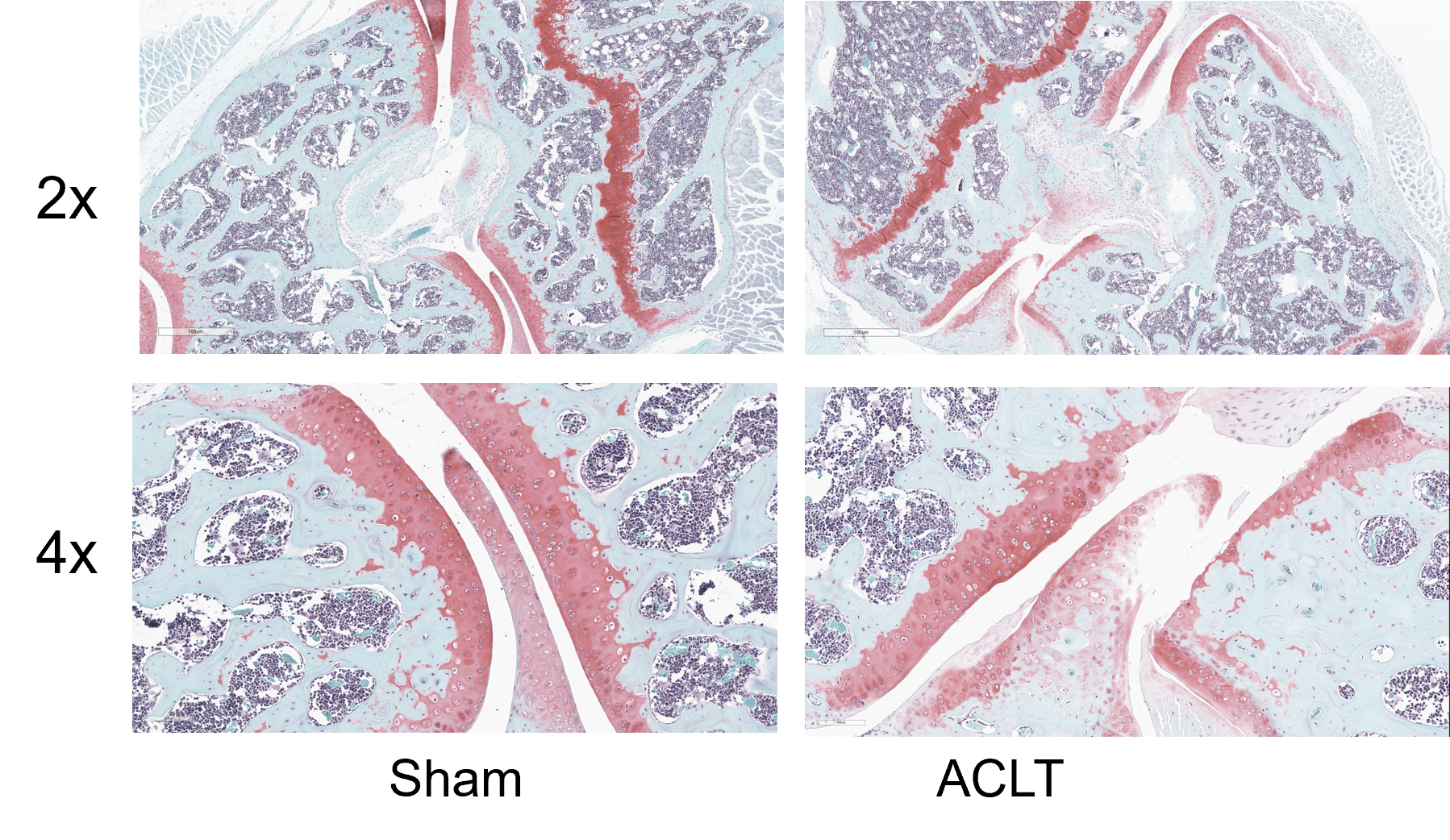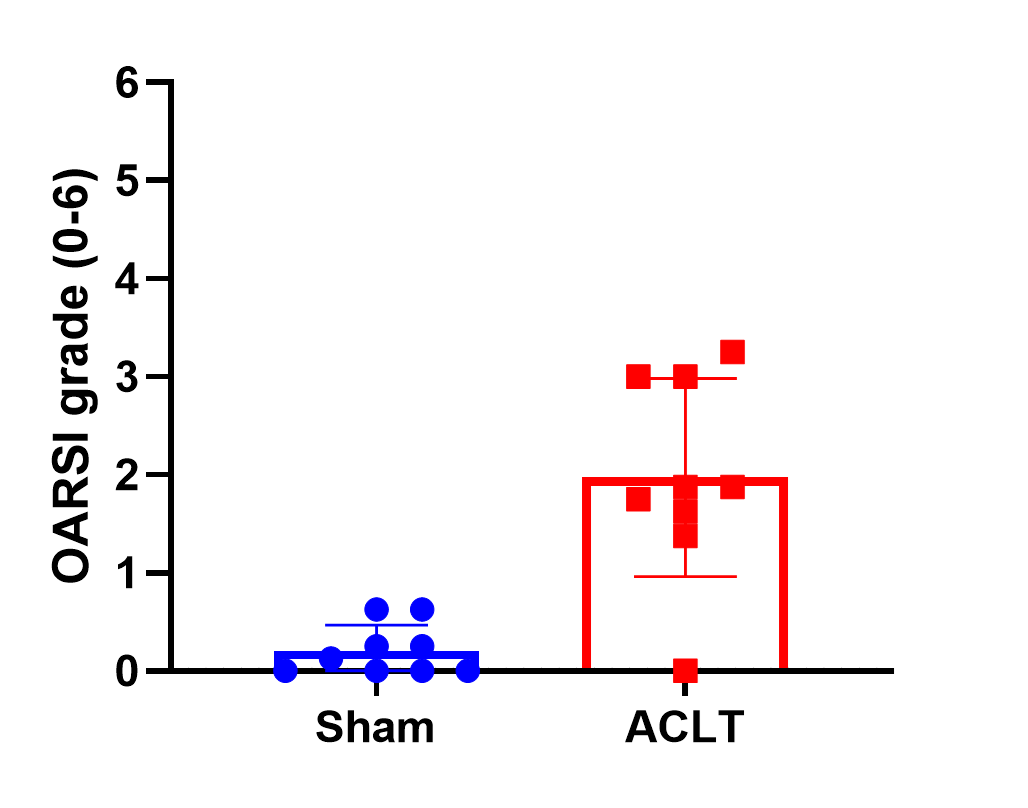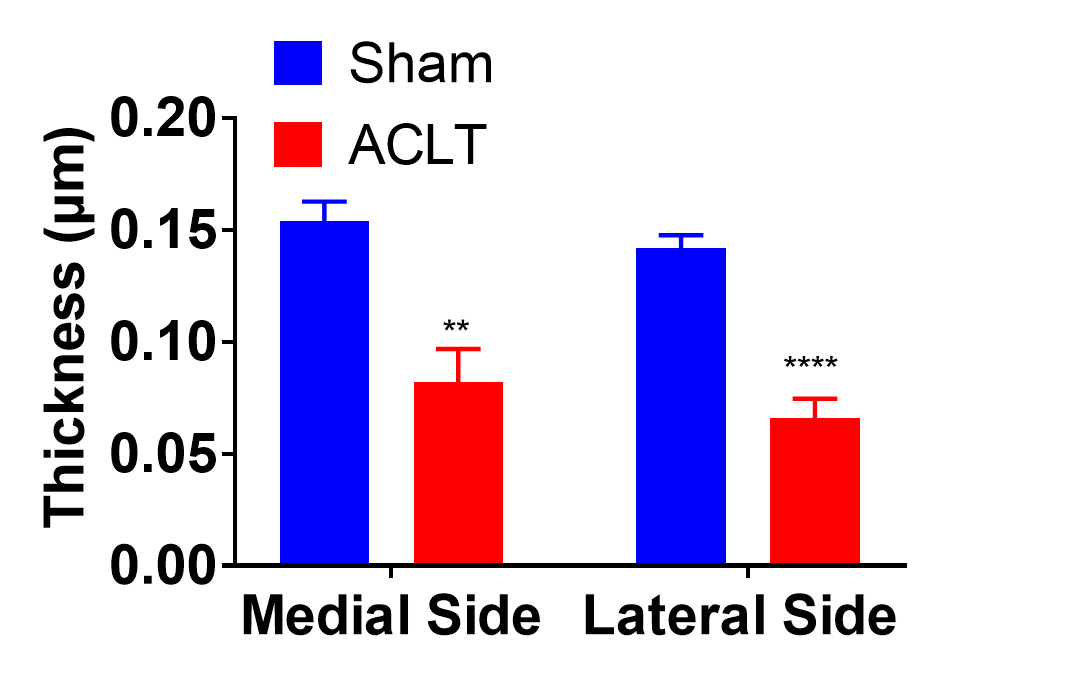Osteoarthritis is a degenerative joint disease chiefly characterized by loss of articular cartilage, resulting in joint pain and development of osteophytes (bone spurs).
ACL transection is a commonly used injury used to accelerate the progression of osteoarthritis-like disease in animal models. After 8 weeks, H&E staining and micro-CT scanning can be performed to determine disease severity following surgery and/or interventional treatments.
-
Osteoarthritis Model Build
-

Male C57Bl 6 mice were subjected to ACL transection to induce disease. At 8 weeks post surgery, animals were assessed for disease progression via histologic methods and microCT.


Disease scoring in the Osteoarthritis disease model. Safranin O sections were scored to determine the severity of disease according to the OARSI system (Glasson SS, Chambers MG, Van Den Berg WB, Little CB. The OARSI histopathology initiative – recommendations for histological assessments of osteoarthritis in the mouse. Osteoarthritis Cartilage. 2010 Oct;18 Suppl 3:S17-23. doi: 10.1016/j.joca.2010.05.025. PMID: 20864019.).



ACL Transection-induced osteoarthritis in mouse. Representative CT images and related indicators were measured 8 weeks after ACLT. Values are expressed as mean ± SEM. n=8, T-test, * p<0.05, **p<0.01.



